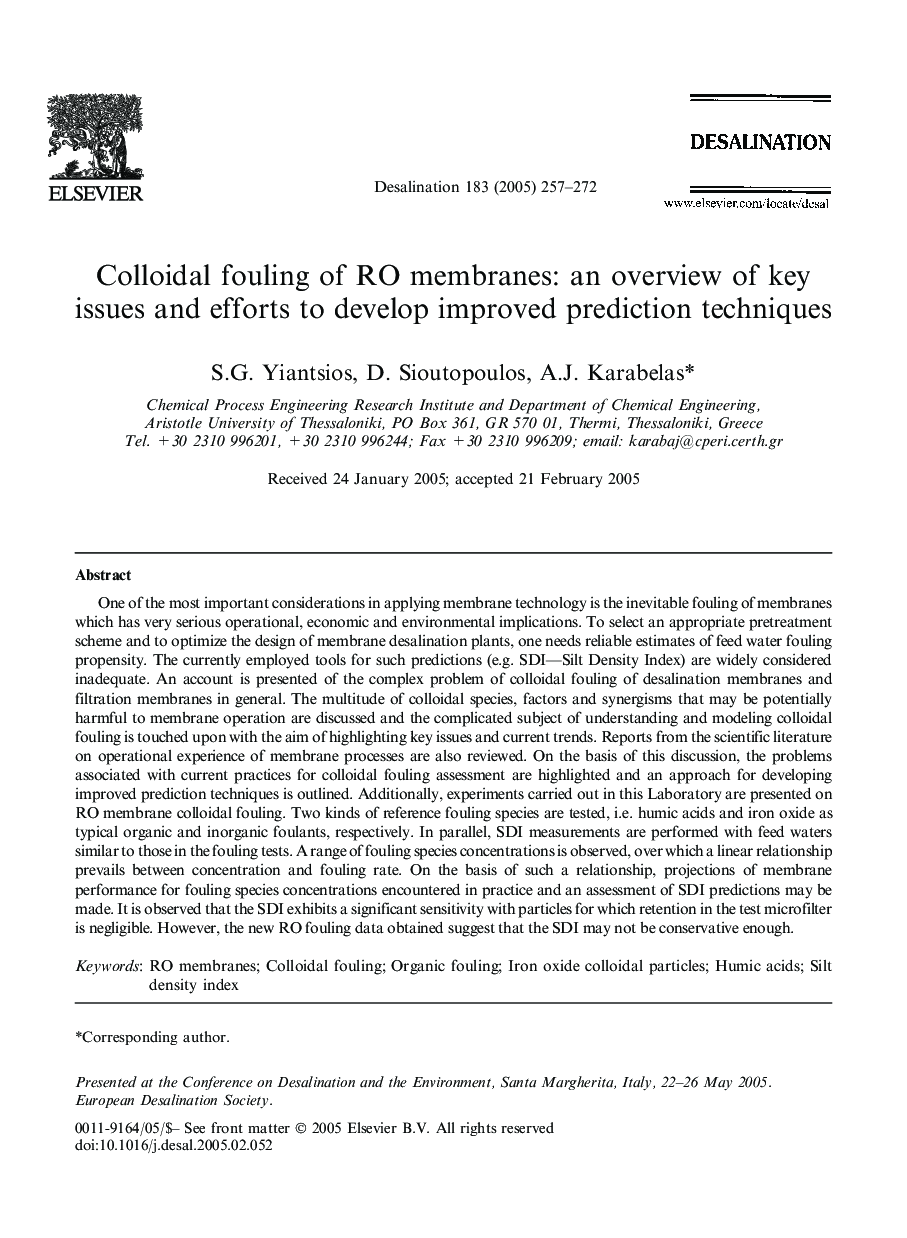| Article ID | Journal | Published Year | Pages | File Type |
|---|---|---|---|---|
| 9680932 | Desalination | 2005 | 16 Pages |
Abstract
One of the most important considerations in applying membrane technology is the inevitable fouling of membranes which has very serious operational, economic and environmental implications. To select an appropriate pretreatment scheme and to optimize the design of membrane desalination plants, one needs reliable estimates of feed water fouling propensity. The currently employed tools for such predictions (e.g. SDI-Silt Density Index) are widely considered inadequate. An account is presented of the complex problem of colloidal fouling of desalination membranes and filtration membranes in general. The multitude of colloidal species, factors and synergisms that may be potentially harmful to membrane operation are discussed and the complicated subject of understanding and modeling colloidal fouling is touched upon with the aim of highlighting key issues and current trends. Reports from the scientific literature on operational experience of membrane processes are also reviewed. On the basis of this discussion, the problems associated with current practices for colloidal fouling assessment are highlighted and an approach for developing improved prediction techniques is outlined. Additionally, experiments carried out in this Laboratory are presented on RO membrane colloidal fouling. Two kinds of reference fouling species are tested, i.e. humic acids and iron oxide as typical organic and inorganic foulants, respectively. In parallel, SDI measurements are performed with feed waters similar to those in the fouling tests. Arange of fouling species concentrations is observed, over which a linear relationship prevails between concentration and fouling rate. On the basis of such a relationship, projections of membrane performance for fouling species concentrations encountered in practice and an assessment of SDI predictions may be made. It is observed that the SDI exhibits a significant sensitivity with particles for which retention in the test microfilter is negligible. However, the new RO fouling data obtained suggest that the SDI may not be conservative enough.
Related Topics
Physical Sciences and Engineering
Chemical Engineering
Filtration and Separation
Authors
S.G. Yiantsios, D. Sioutopoulos, A.J. Karabelas,
